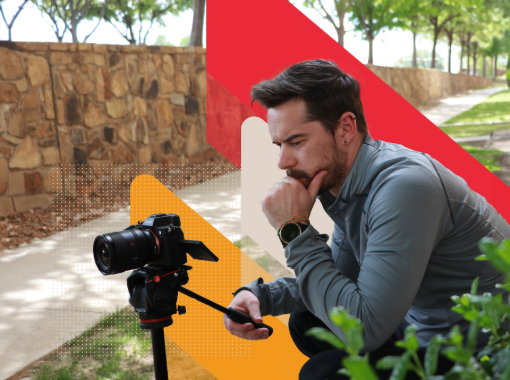When looking at creative work, we tend to look towards the best designs in the industry and marvel over their simplicity, beauty, and effectiveness. Some admire it, some look to emulate it. As a designer, I often find myself asking “How on earth did they come up with that?”
How can each person be more creative in their own work? The most important thing to remember is that creativity is not magic, it’s not genetic, it’s not quick & easy, and it’s not just restricted to art or music. It’s a skill that can be trained, most creatives spending years of education and training to get good at it.
To help you harness the power of creativity, this article will outline the five-step creative process one goes through when generating ideas and creating amazing work. Understanding these 5 steps will not only help you understand the creatives you work with but to be more creative yourself in any industry.
Disclaimer: Results may vary!
While some professional creatives might make it look easy, the creative process is not linear, or predictable. It might take days, or weeks, or months, and you might have to go back and forth and repeat steps to get the desired outcome.
Sometimes deadlines force us to accelerate the process, but usually the more time we spend with the process, the better the ideas will be. The process is also not just limited to the arts. Each step looks different for each person, job, industry, or creative medium.
1) Preparation
The key to this step is to fully immerse oneself in the material. This step usually involves a creative brief and includes things like researching a brand, the target audience, or gathering inspirations from other sources. If you’re a writer, you’re reading other works in the same area. If you’re a musician, you’re listening to other pieces of music that inspires you. The same applies for the creative class of graphic designers and digital artists.
2) Incubation
This step is where the “magic” happens for most creatives. After we absorb all the information from the Preparation phase, the next step is to let the ideas marinate in our subconscious. This is when you step away from the problem and do something else; that could be grabbing lunch, going for a run, watching TV, taking a shower, doing laundry, or getting a good night’s rest. For me, some of my best ideas come during nighttime drives through Dallas, admiring the lights of the city skyline.
3) Illumination
This is the lightbulb moment — the “Aha!” moment, the “Eureka!” — the moment when the perfect idea hits you like a bolt of lightning. As a mentor of mine once said, the best ideas come when two unrelated ideas bounce around in your brain for a while and collide together to create something amazing. When this moment hits, a person might rush to their sketchbook or keyboard to jot it down before it escapes them.
4) Evaluation
This is the hard part, where you look at all the ideas before you and narrow it down to which ones work and which ones don’t. This is usually the phase when client feedback comes into the mix and you, your team and the client weigh different options and decide what works for the problem at hand.
5) Implementation
You’ve done the work, you’ve narrowed it down, you’ve decided on a direction, now go! This is the part where the final product gets produced, where things like skill, experience, knowledge, and hours of work come in to play. This is the writer’s final draft, the artist’s finished piece, the musician’s live performance. The satisfaction of a job well done after this stage makes all the hours of hard work worth it.
People in creative industries spend thousands of hours repeating and perfecting this process to figure out what works for them, but that doesn’t mean only designers and writers can use it. I encourage you to use these 5 steps in your work to help make work that’s more creative, more revolutionary and will be sure to impress your clients and yourself. Go for it!



